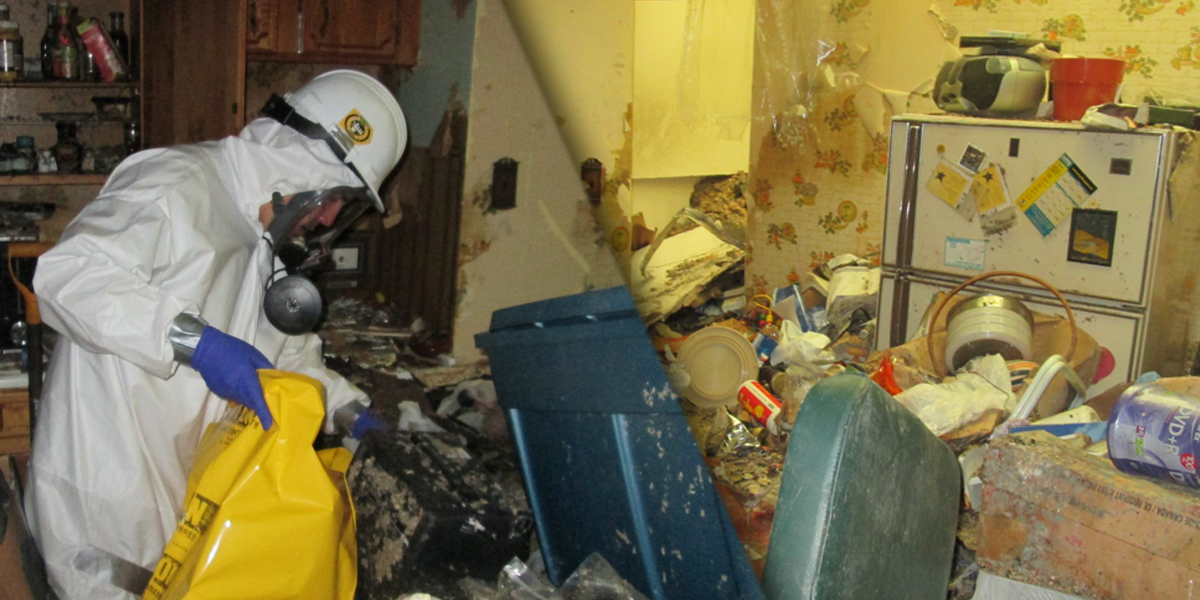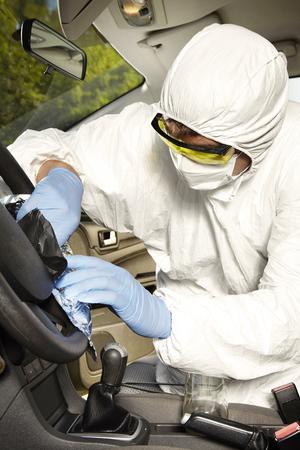Expert Biohazard Cleansing and Purification for Blood, Bodily Fluids, and Hazardous Products
In the realm of biohazard cleansing and decontamination for blood, bodily fluids, and unsafe products, accuracy and expertise are paramount. The prospective health dangers related to exposure to biohazards underscore the vital demand for precise handling and comprehensive cleanup. Specialized training furnishes specialists with the expertise and abilities essential to attend to these dangerous situations properly. However, it is not just concerning cleaning up; the value of employing proper decontamination techniques can not be overemphasized. As we browse the elaborate landscape of biohazard cleaning, understanding the nuances of policies, conformity, and the customized tools at play ends up being vital in making certain a safe and thorough decontamination procedure.
Health Risks of Biohazard Exposure
Exposure to biohazards presents significant wellness threats that can result in severe consequences for communities and individuals alike. Biohazards encompass a variety of organic materials, including blood, bodily liquids, mold, bacteria, infections, and other possibly infectious products. When individuals come right into call with these biohazards, whether via accidents, inappropriate handling, or environmental exposure, they deal with the danger of contracting major diseases or conditions.
One of the main wellness threats linked with biohazard direct exposure is the transmission of transmittable conditions. Bloodborne microorganisms such as HIV, hepatitis B and C, and different germs can be existing in biohazardous products, presenting a direct risk to human health and wellness. Breathing in air-borne biohazards like mold and mildew spores or entering into call with contaminated surfaces can additionally result in breathing concerns, allergic reactions, and various other negative health and wellness impacts.
Furthermore, biohazard exposure can have long-lasting wellness effects, with some illness materializing years after the preliminary get in touch with (Blood Cleanup). Therefore, it is vital to focus on correct biohazard cleaning and purification to mitigate these health and wellness threats and ensure the security of people and communities

Specialized Educating for Biohazard Cleaning
When it comes to handling biohazard clean-up efficiently and safely, specialized training plays an essential duty in ensuring appropriate decontamination procedures are followed. Biohazard cleaning calls for certain knowledge and abilities to efficiently reduce risks related to bloodborne virus, physical fluids, and harmful materials. Experts educated in biohazard cleaning undergo extensive direction on exactly how to safely manage, remove, and dispose of biohazardous products to stop contamination and exposure.
Specialized training for biohazard cleaning covers a variety of essential subjects, consisting of correct personal safety equipment (PPE) use, bloodborne microorganism awareness, purification strategies, and contaminated materials disposal protocols. Individuals educated in biohazard cleanup are furnished with the essential competence to assess contamination levels, recognize potential hazards, and implement suitable clean-up treatments in compliance with regulatory criteria.
Continual training and education are vital in the field of biohazard cleanup to remain upgraded on the most up to date decontamination modern technologies, security procedures, and laws. By purchasing specialized training, biohazard cleanup professionals can successfully reply to emergency cleanup circumstances and protect both public wellness and the atmosphere.
Importance of Appropriate Decontamination Techniques
Making use of correct decontamination strategies is crucial in biohazard cleaning to successfully get rid of dangerous materials and decrease health threats. Efficient decontamination not just guarantees the removal of noticeable traces of blood, bodily fluids, and various other biohazards but likewise targets unseen virus that might position significant health and wellness threats otherwise correctly eradicated. By following stringent decontamination protocols, educated specialists can dramatically reduce the risk of direct exposure to unsafe bacteria, viruses, and bacteria that could result in diseases or infections.
Appropriate decontamination strategies include the use of customized devices and anti-bacterials that are especially designed to neutralize biohazards efficiently. Extensive cleaning and sanitation of polluted locations are necessary to prevent the spread of microorganisms and make certain a secure atmosphere for occupants. Furthermore, the proper disposal of biohazardous waste following purification procedures is important in stopping contamination of various other surfaces or individuals.

Equipment and Devices for Safe Cleaning
When dealing with blood, bodily liquids, or hazardous products, biohazard cleaning specialists count on specialized equipment to minimize direct exposure dangers and extensively sanitize the affected area. Additionally, biohazard cleansing packages having disinfectants, absorptive materials, and biohazard bags are utilized to securely have and dispose of polluted things.
Advanced cleansing tools like hospital-grade disinfectants, HEPA-filtered vacuums, and misting machines Our site are employed to sanitize surfaces and get rid of biohazards effectively. Specialized devices such as sharps containers and biohazard garbage disposal containers are utilized to securely manage sharp objects and biohazardous waste materials. By making use of the appropriate devices and devices, biohazard cleansing specialists can make certain an extensive clean-up process that prioritizes safety and decreases wellness dangers for both employees and owners of the affected room.
Laws and Conformity in Biohazard Cleaning
Appropriate adherence to laws and conformity criteria is paramount in biohazard cleaning to make certain the security of both workers and the atmosphere. Government agencies such as OSHA (Occupational Safety and Wellness Management) and the EPA (Epa) have actually established specific guidelines for biohazard cleanup procedures to decrease wellness dangers and ecological contamination. These regulations cover a series of aspects including the handling, transport, and disposal of biohazardous products, along with the needed training and safety devices needed for workers associated with the cleanup process.
Biohazard cleaning business need to stay up-to-date with these regulations to assure that their procedures satisfy the called for safety and security criteria. Failure to follow these laws can result in extreme consequences, consisting of fines, lawsuit, and jeopardizing the health and wellness of individuals and the setting. By following rigorous policies and conformity procedures, biohazard cleaning business can successfully reduce dangers and ensure a safe and detailed cleanup procedure for all celebrations included.
Conclusion
In final thought, biohazard cleansing and decontamination call for customized training, appropriate techniques, and adherence to laws. Exposure to blood, physical fluids, and dangerous materials presents significant health threats, making it critical to make use of the right devices and devices for risk-free cleanup. By complying with rigorous procedures and standards, experts can efficiently minimize the threats connected with biohazard exposure and ensure blood clean up solution the security of both themselves and others.
As we browse the detailed landscape of biohazard clean-up, understanding the subtleties of regulations, conformity, and the customized devices at play becomes imperative in making sure a secure and comprehensive decontamination process. (Blood Cleanup)
When it comes to taking care of biohazard cleanup effectively and safely, specialized training plays a basic duty in making certain appropriate purification procedures are followed.Utilizing proper decontamination methods is critical in biohazard cleanup to efficiently eliminate harmful Get the facts products and decrease wellness threats. In addition, biohazard cleaning packages consisting of anti-bacterials, absorbent products, and biohazard bags are utilized to securely include and get rid of of contaminated items.
Federal government companies such as OSHA (Occupational Safety and Health Management) and the EPA (Environmental Security Company) have established details guidelines for biohazard cleanup procedures to reduce wellness dangers and environmental contamination.